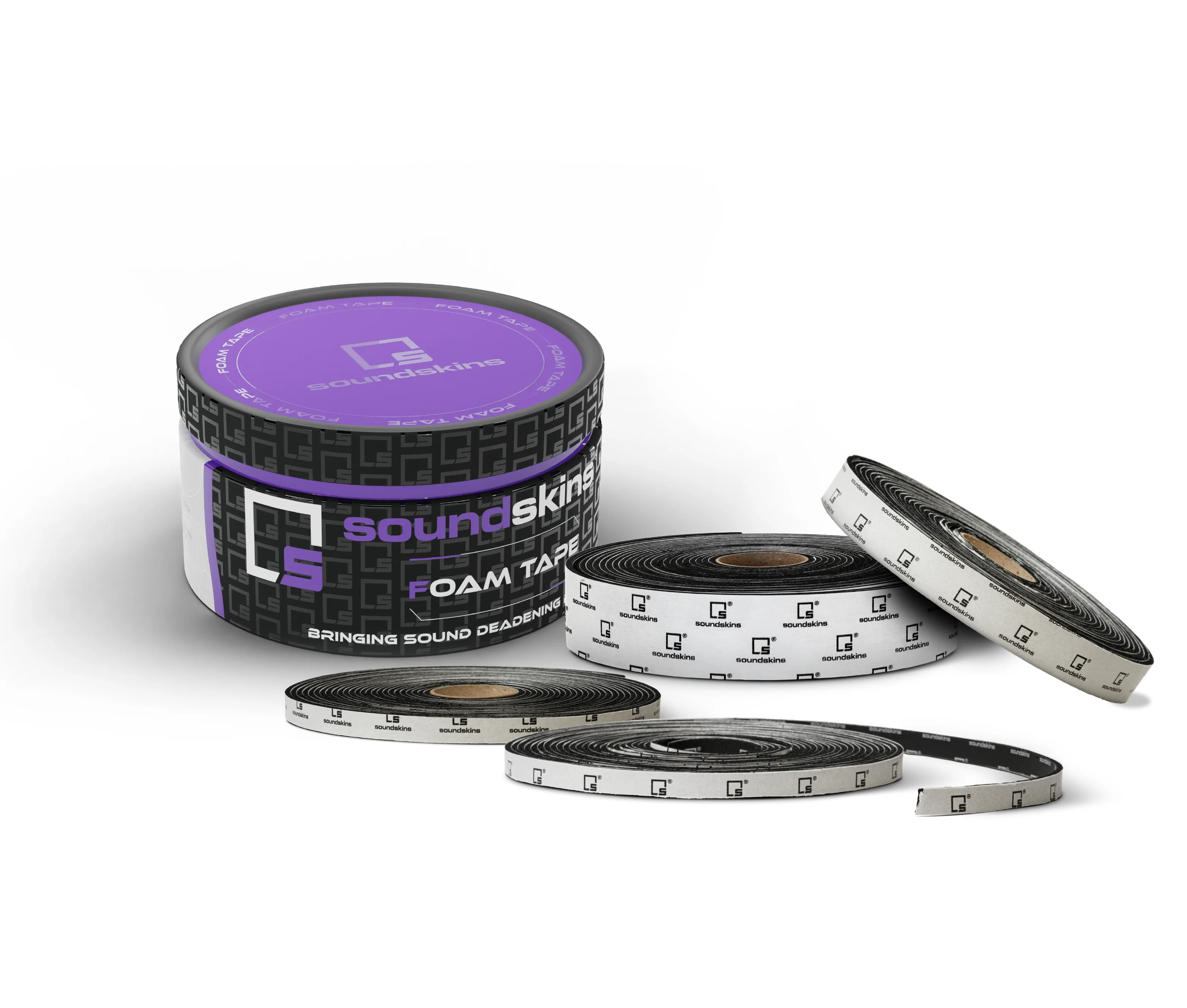
Introduction
Reducing unwanted noise in vehicles, homes, and workplaces has become a priority for many people seeking comfort and improved acoustics. Among the various solutions available, foam sound deadener has gained popularity as an effective way to absorb vibrations and dampen sound. However, traditional soundproofing methods such as mass-loaded vinyl, fiberglass insulation, and acoustic panels remain widely used. Understanding the differences between these options can help determine which one is the best fit for specific noise reduction needs.
How Foam Sound Deadener Works
Foam sound deadener is designed to absorb vibrations and airborne noise by reducing sound waves’ ability to bounce off surfaces. Typically made from dense, open-cell or closed-cell foam, this material traps sound energy and minimizes echoes. It is often used in vehicles, under flooring, or inside walls to dampen sound before it can travel further. Unlike rigid soundproofing materials, foam sound deadeners offer flexibility and ease of installation, making them a preferred choice for DIY projects and automotive applications.
Traditional Soundproofing Methods
Traditional soundproofing methods focus on blocking or dampening sound using heavier materials that either absorb or deflect sound waves. Mass-loaded vinyl, for example, adds weight to walls and floors to prevent sound from passing through. Fiberglass insulation is another common material used to absorb sound in walls, ceilings, and floors, reducing both airborne and impact noise. Acoustic panels, typically made of dense foam or fabric-covered fiberglass, are designed to improve room acoustics by reducing echoes and reflections.
Effectiveness of Foam Sound Deadener vs. Traditional Soundproofing
The effectiveness of foam sound deadener depends on the type of noise being addressed. Foam deadeners are excellent for absorbing vibrations and high-frequency noise but may not be as effective in blocking low-frequency sounds like bass or heavy machinery noise. Traditional soundproofing materials, especially those with added mass, are better suited for blocking external noise and reducing sound transmission between rooms. Combining both methods can enhance noise reduction by addressing different aspects of sound control.
Installation and Ease of Use
Foam sound deadeners are often easier to install than traditional soundproofing materials. Many foam products come with adhesive backing, allowing them to be applied directly to surfaces without the need for additional tools or modifications. This makes them a great option for automotive soundproofing, home studios, or small-scale projects. Traditional soundproofing materials, on the other hand, often require professional installation, as they involve cutting, layering, and securing heavier materials to walls, floors, or ceilings.
Cost Comparison
From a cost perspective, foam sound deadener is generally more affordable than traditional soundproofing materials. It provides an effective noise reduction solution without requiring extensive renovations or expensive materials. Traditional soundproofing solutions, while more effective in blocking noise, often come at a higher price due to the cost of materials and labor. For those looking for a budget-friendly way to reduce noise, foam sound deadeners can be a practical alternative.
Durability and Maintenance
Foam sound deadeners are designed to last for years, but their durability depends on environmental factors such as moisture, temperature changes, and physical wear. High-quality foam products can maintain their effectiveness over time, but exposure to extreme conditions may reduce their lifespan. Traditional soundproofing materials, particularly those used in construction, are more durable and provide long-term noise control without needing frequent replacements.
Best Applications for Foam Sound Deadener
Foam sound deadeners are ideal for automotive soundproofing, home studios, office spaces, and areas where vibration reduction is needed. They work well for absorbing sound within a confined space but may not be the best option for blocking external noise. If the primary concern is improving interior acoustics or reducing rattles and vibrations, foam sound deadeners are a reliable solution.
When to Choose Traditional Soundproofing
Traditional soundproofing materials are better suited for situations requiring complete noise isolation or significant sound blocking. Home theaters, recording studios, and apartment walls benefit from heavy-duty soundproofing methods that prevent sound from traveling between rooms. If external noise is a major issue, traditional soundproofing is often the more effective choice.
Combining Both Methods for Maximum Effect
For those looking to achieve the best possible sound control, combining foam sound deadener with traditional soundproofing techniques can provide comprehensive noise reduction. Using foam deadeners to absorb internal sound while incorporating mass-loaded vinyl or acoustic panels for blocking noise transmission can result in superior soundproofing. This hybrid approach ensures that both airborne and impact noise are effectively managed.
Conclusion
Both foam sound deadener and traditional soundproofing materials have their own advantages and best-use scenarios. Foam deadeners provide a lightweight, affordable, and easy-to-install option for reducing vibrations and improving acoustics. Traditional soundproofing, while more expensive and labor-intensive, offers superior noise blocking. Choosing the right method depends on the specific noise problem, budget, and level of sound control required. In many cases, a combination of both solutions yields the best results for creating a quieter and more comfortable space.